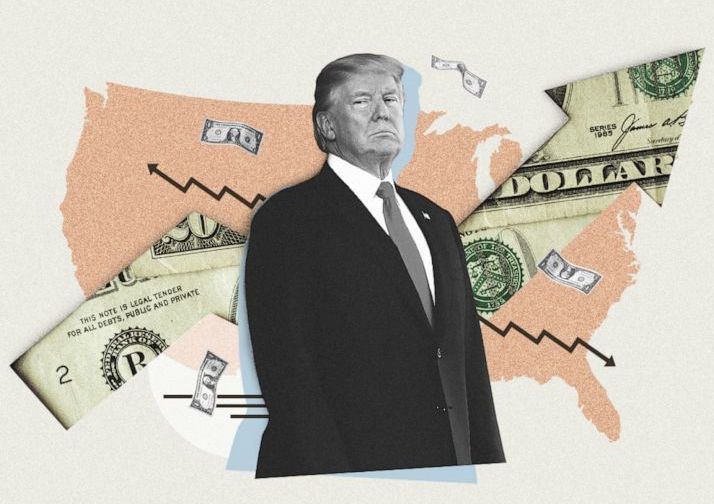Adapted from the January 2025 PREP Newsletter
Here we go again! Ready or not, welcome to the second presidency of Donald Trump, often known as the real estate “Developer-in-Chief”. Regardless of one’s political beliefs, it’s undoubtedly interesting and exciting to have a real estate industry professional (back) in the White House.
According to a recent report by Yardi Matrix, the future outlook for multifamily is strongly dependent on the policies the Trump administration adopts.
His first term, which lasted from 2017 to 2021, had significant effects on the U.S. economy and real estate markets, including multifamily real estate. The impact was shaped by policies, regulatory changes, tax reforms, and broader economic conditions.
So, is Trump going to be good for real estate, and what might this mean for us specifically as multifamily investors?
First, the potential positives:
1. Expected tax cuts would help the real estate industry.
The Tax Cuts and Jobs Act (TCJA), passed in December 2017, had a profound impact on real estate, including the multifamily sector.
The new administration is expected to push for a renewal of TCJA, including provisions such as reducing individual income tax rates, establishing a 20% business income tax deduction for pass-through entities, preserving 10-31 exchanges, and doubling the estate tax exemption. The 20% reduction generally applies to real estate investments.
The administration will also likely make permanent the individual income tax slashes of the Act, with a top tax rate of 37%. The estate and individual tax reductions would be attractive for estate and tax planning (although there is some concern that they could be inflationary). Another possibility is a reduction in the capital gains tax by 20%. Lessening the tax could be of great benefit to real estate investors, opening additional profit by reducing the regulatory expense.
Here are a few tax cuts implemented during Trump’s first administration and their impact on real estate investors:
· Lower Corporate Tax Rate: The reduction in the corporate tax rate from 35% to 21% benefited (large property) real estate investors, potentially increasing their profitability and investment capacity.
· Bonus Depreciation: The TCJA expanded the bonus depreciation rule, allowing real estate investors to immediately deduct 100% of the cost of new depreciable property (including certain improvements) in the year it is purchased, instead of spreading deductions over several years. This accelerated depreciation was particularly attractive to multifamily investors, making it easier to offset income.
· Interest Deduction Limitations: The TCJA also limited the amount of interest that can be deducted on loans, reducing the tax benefits of highly leveraged real estate deals, but this had a less significant impact on multifamily properties compared to commercial real estate.
According to Oxford Economics, the renewed tax cuts will generate a higher level of GDP through 2030, and that will support real estate occupier demand and rental growth for multifamily. The tax cuts and accelerated depreciation should also result in increased profitability for developers and investors.
However, even with Republican control of the Senate, House, and White House, none of this is easy or guaranteed. Tax policy is known to be one of the most challenging areas of legislation.
2. Reduced regulation is likely, and would create a regulatory environment that would allow the industry to leverage the money it needs to build the housing America needs.
Policies that stymie development will probably be loosened or not enforced, and Trump has expressed great desire to remove federal regulations, which would help with housing development. While he has not shared specific housing proposals, the Republican Party’s 2024 platform proposed opening portions of federal lands for new home construction and rescinding “unnecessary” regulations that could stimulate development.
Trump’s first administration’s economic policies, including tax cuts and deregulation, contributed to a period of economic growth before the pandemic. This growth boosted demand for multifamily properties, particularly in urban and suburban areas, as employment and incomes rose.
3. Trump is focused on alleviating the U.S. housing supply shortage.
It is estimated that the U.S. is undersupplied with housing and needs 1.5 million additional vacant units to return to balance; 630,000 for sale and 830,000 for rent. The incoming administration has proposed several policies that could help the housing shortage and affordability crisis.
One of those policies is that some federal land could be opened for housing construction. This change in policy could increase housing supply and affordability, but it may face regulatory, environmental, and infrastructure challenges.
4. The Opportunity Zone program he pushed during his first term gives tax breaks to projects in disadvantaged neighborhoods.
Funding of affordable housing programs like opportunity zones and the Low-Income Housing Tax credit is likely to remain or be expanded. Trump’s appointment to lead the Department of Housing and Urban Development, Scott Turner, worked as part of a council that promoted the zones during the first Trump administration, so that could be a possible boon for the industry. Trump’s team may seek to expand the Opportunity Zone program by adding new areas and extending tax benefits to incentivize more development.
5. Several of Trump’s appointments have come from real estate.
The list includes developer Steve Witkoff (Special Envoy to the Middle East) and Newmark chair Howard Lutnick (Commerce Secretary), developer Charles Kushner (Ambassador to France), and Scott Turner (Department of Housing and Urban Development). These appointments will likely operate in a manner favorable to the industry.
6. The new administration could provide opportunities to encourage more affordable housing development.
There will likely be progress on key issues like extending tax credits for low income and workforce housing, and cutting regulations that impede development.
7. The Trump administration will get spending under control, and the new cost efficiencies will help get inflation under control.
8. Trump may pressure the Federal Reserve to lower interest rates, spurring economic growth.
It is, however, important to note that interest rates did go up during Trump’s first term.
Now, on to the potential negatives:
1. Trump’s plan to implement/raise tariffs on foreign goods could lead to more inflation and increase the cost of building materials.
Trump’s preferences — high growth, tariffs, tax cuts, and immigration — could lead to increased deficit spending and inflation.
Wood and concrete often come from other countries, and the tariffs could hinder development and lead to retaliation by the targeted countries. The cost of steel, aluminum and other building materials might also increase.
Additionally, rising costs could motivate the Fed not to cut interest rates.
2. There are worries that Trump’s plans for mass deportations of illegal immigrants and restrictive immigration policies could cause labor shortages, raise construction costs, and put a strain on development.
34% of construction workers are foreign-born and 17% are undocumented. The deportations could also reduce housing demand from this population. It’s important to note that the Park Row Equity Partners business model focuses on acquiring existing properties rather than development deals, and that our target renter is not the undocumented population.
3. There’s a chance that Trump’s plan for tax cuts will create inflationary pressure.
Tax cuts could free up more money for consumer spending, leading to another cycle when too much money is chasing too few goods in the economy.
While it is not completely clear what a Trump presidency will bring, there will certainly be a lot happening in real estate, much of it very likely to be favorable. Let’s hope so!
have likely been busy speculating and making bets on impending moves by the Fed.
The recent rate cuts beg the question: do the rate cuts actually affect real estate investments, and if so how?
Investing in real estate successfully requires utilizing leverage, which refers to purchasing the property with a mortgage. This enables investors to purchase more property with limited capital, thereby maximizing returns. As in purchasing a home, every mortgage comes with an interest rate, and the lower the rate, the less expensive the purchase becomes.
After more than a year with the U.S. federal funds target rate at a 23-year high, Federal Reserve Chair Jerome Powell recently said the words investors have long awaited: "The time has come for policy to adjust."
Now, with the recent rate cut, we find ourselves at a critical moment for both the economy and the real estate markets. While previous rate cut cycles have not been identical historically, they do often follow a pattern. By analyzing previous instances of monetary easing and subsequent impact on private markets, we can better position our portfolios to capture emerging opportunities while remaining vigilant about potential risks.
As we look beyond the immediate horizon, rate cuts are poised to revitalize a key area of private markets: real estate equity.
The commercial real estate market has perhaps felt the most acutely negative impacts from elevated rates. As it became more expensive to borrow money, equity investors still wanting their expected high returns, required properties to lower their valuation. As a result, many equity investors have been holding on to their assets rather than selling at a discount.
Lower rates are likely to bring much-needed relief to the commercial real estate sector in a few ways:
Valuation Recovery: Lower borrowing costs might help bring seller and buyer expectations closer together. Sellers might be able to maintain higher prices, while buyers can afford to pay more. This could lead to more deals being made.
Refinancing Opportunities: Existing property owners may be able to refinance their loans at lower rates. This could improve their cash flow and potentially increase returns for investors. We at PREP have been very fortunate to have weathered the increase in rents without too much turbulence with our assets, and we are very well positioned to take advantage of a lower interest rate environment.
Looking ahead, with interest rate cuts still desperately needed, and the state of the economy still remaining the number one concern for voters this coming election, it will be interesting how the current and incoming administrations maneuver levers to initiate rapid change for the better, hopefully.
Wishing you all a successful last quarter of 2024, and Happy Sukkot to all those who celebrate!




